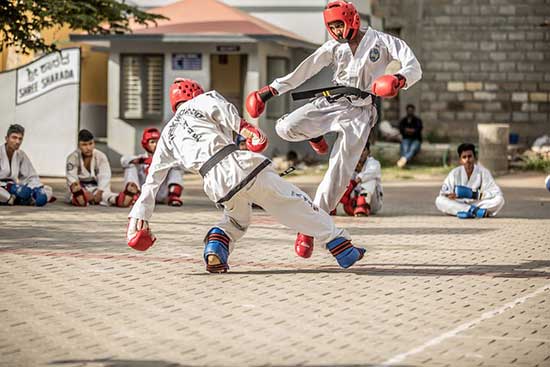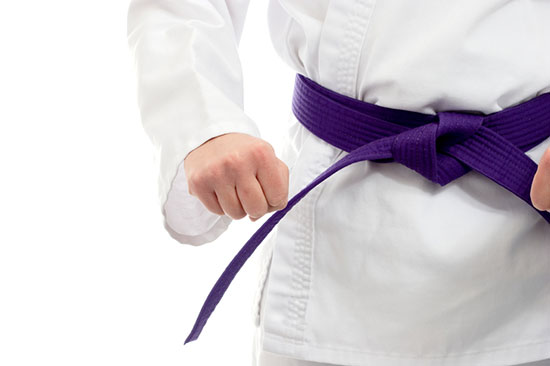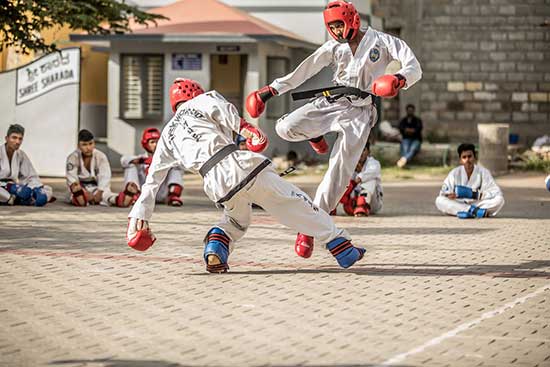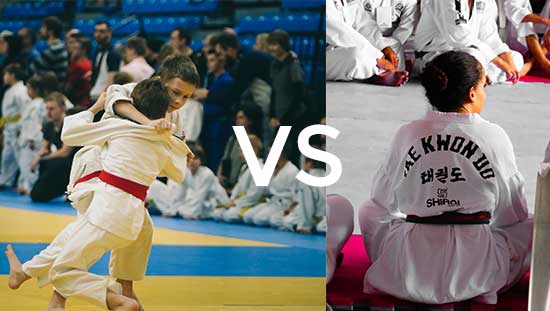The color system for taekwondo belts is not universal across all styles of taekwondo or even all schools. Many people are familiar with the various colors of taekwondo belts.
This is often used as a ranking system to designate a student’s level of skill. Different colors come with a different degree of difficulty associated with the rank that the belt represents.
The colors of the belts may vary slightly from school to school, and some belts may have stripes embedded.
As such, there is much you are yet to unravel about taekwondo belts with stripes. What do the stripes represent, and do they have any significance? Tag along.
Contents
What does each belt with a stripe mean?
The taekwondo belts system is divided into the Gup (junior) and the Dan (senior) ranks. The gup comprises around 10 colored belts.
However, the number may vary depending on the governing taekwondo organization. The Dans is a black belt ranking system in taekwondo that comprises degree levels, with the 1st dan (basic black belt) ranking as the lowest and the 9th dan denoting the seniority in the martial art.
Each level in taekwondo doesn’t necessarily come with a belt color. The belts can include differently colored stripes to indicate a higher ranking and intermediate steps towards the next rank but on the same belt color.
The use of stripes in taekwondo serves as an incentive to inspire the students to progress with the discipline.
Moreover, the stripes help the students identify with a particular skill set and expertise, and thus yearn to even do better to be at par with those ahead of them. Stripes are a short-term student record-tracking system.
The white belt is earned as an entry-level belt and is issued together with your taekwondo uniform. It represents naivety.
However, as the student advances, they may receive their first yellow stripe on their white belt. The yellow stripe on a white belt denotes a more advanced practitioner who has learned more forms and moves than a beginner.
The stripes designation process is not quick. It ensures that the student is well-versed in the basics at that level and demonstrates competence before moving on to more advanced forms.
As such, each subsequent stripe on a belt represents a higher achievement.
Stripes Meaning on Taekwondo Belt Ranking System
Black Stripe
A black stripe can be inscribed on one’s belt when one showcases 100% exceptional mat presence. The student can be described as respectful, focused, and disciplined.
Moreover, the student earns the black stripe if they are able to demonstrate the five tenets of taekwondo.
Brown Stripe
You earn yourself a brown stripe on your belt if you understand and can execute the previous and present fundamentals with speed, power, and a degree of precision.
Orange Stripe
It is attained if you can demonstrate the proper forms, know their current and previous ranks, and execute them swiftly with power and precision.
Yellow Stripe
Issued when one knows current and previous kicks and executes them with speed and accuracy.
Green Stripe
A student is well acquainted and can execute One Steps moves, which are synchronized moves and counterattacks in the event of a real combat situation.
Red Stripe on an Orange Belt and Up
You get a red stripe on your belt if you can demonstrate good sparring and obey the strict rules and precautions governing the combat. You have to spar effectively to get the stripe.
Blue stripe
Here, you have to exhibit prowess in weaponry use and know the current and previous forms. Execution of the skill has to employ precision, speed, and power.
White Stripe on Brown Belt and Up
A practitioner can illustrate adept grappling, perform different steps in the required sequence, and effortlessly break free from grabs.
How long does it take to get each belt with stripes?
Taekwondo is an individual sport, and thus, some students may take longer than others to attain stripes on their belts.
As such, consistency and commitment will allow you to advance and demonstrate your skill with ease. However, the curriculum varies from school to school and from instructor to instructor.
Conclusion
There are different belt colors used in taekwondo. As a newbie in the sport, this can be so confusing and demoralizing as each color belt seems to include even more stripes with a different meaning, which translates to even more input from your end.
Well, as you have seen, commitment and discipline will get you there.






